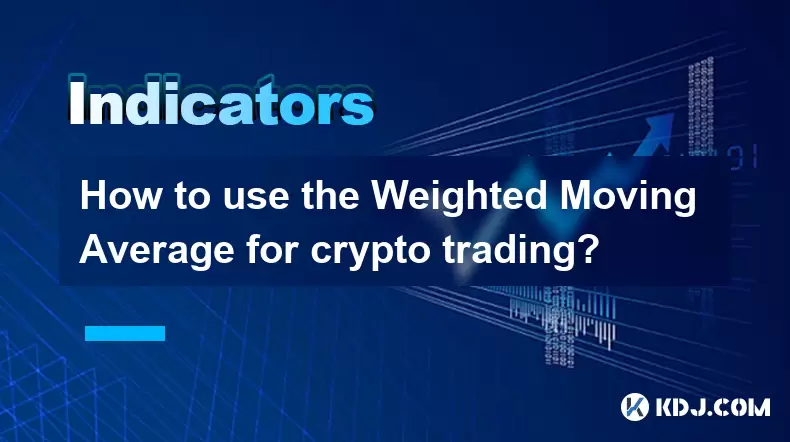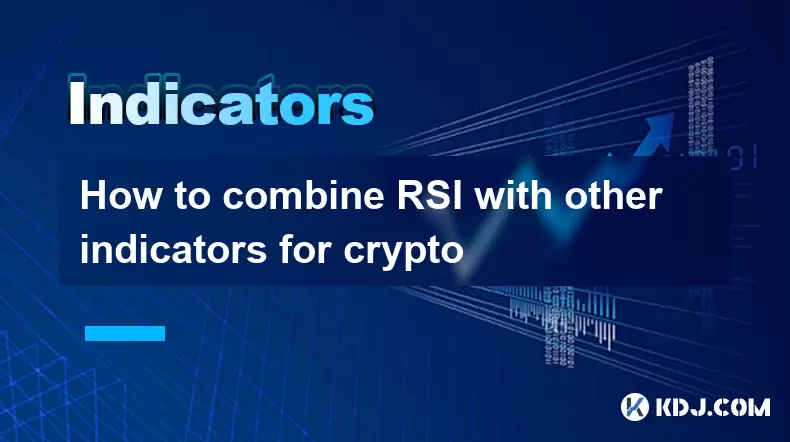-
 Bitcoin
Bitcoin $121,713.8152
3.06% -
 Ethereum
Ethereum $3,041.6437
2.42% -
 XRP
XRP $2.9499
5.12% -
 Tether USDt
Tether USDt $1.0000
-0.02% -
 BNB
BNB $704.1034
1.75% -
 Solana
Solana $166.7523
2.91% -
 USDC
USDC $0.9999
0.00% -
 Dogecoin
Dogecoin $0.2052
2.90% -
 TRON
TRON $0.3011
-0.47% -
 Cardano
Cardano $0.7461
1.42% -
 Hyperliquid
Hyperliquid $48.3650
1.12% -
 Stellar
Stellar $0.4548
3.52% -
 Sui
Sui $3.9527
14.50% -
 Chainlink
Chainlink $16.3300
5.87% -
 Bitcoin Cash
Bitcoin Cash $511.8016
1.25% -
 Hedera
Hedera $0.2395
1.40% -
 Avalanche
Avalanche $21.6526
2.06% -
 UNUS SED LEO
UNUS SED LEO $9.0073
-0.23% -
 Shiba Inu
Shiba Inu $0.0...01369
2.61% -
 Toncoin
Toncoin $3.0335
0.66% -
 Litecoin
Litecoin $96.6206
1.72% -
 Monero
Monero $355.1673
5.35% -
 Polkadot
Polkadot $4.0839
2.47% -
 Uniswap
Uniswap $9.3282
9.72% -
 Dai
Dai $0.9997
-0.01% -
 Ethena USDe
Ethena USDe $1.0004
-0.04% -
 Pepe
Pepe $0.0...01248
1.07% -
 Bitget Token
Bitget Token $4.4642
2.68% -
 Aave
Aave $325.0626
6.81% -
 Bittensor
Bittensor $418.1482
6.22%
How to use the Weighted Moving Average for crypto trading?
The Weighted Moving Average (WMA) helps crypto traders identify trends and potential reversals by emphasizing recent price data, making it more responsive than the simple moving average.
Jul 11, 2025 at 02:21 pm

Understanding the Weighted Moving Average (WMA) in Crypto Trading
The Weighted Moving Average (WMA) is a technical indicator commonly used by traders to identify trends and potential reversal points in asset prices. Unlike the simple moving average, which assigns equal weight to all price data points within a specified period, WMA gives more significance to recent price movements. This makes it particularly useful in the fast-moving and highly volatile crypto market.
In cryptocurrency trading, where prices can swing dramatically within short timeframes, using WMA helps traders respond quickly to changes in momentum. The calculation emphasizes the most recent closing prices, making it a responsive tool for gauging trend strength and direction.
How to Calculate the Weighted Moving Average
To effectively use WMA, it’s essential to understand how it's calculated. Here's a step-by-step breakdown of computing a 5-day WMA:
Assign weights to each day’s closing price, with higher weights given to more recent days. For example:
- Day 1 = weight of 1
- Day 2 = weight of 2
- Day 3 = weight of 3
- Day 4 = weight of 4
- Day 5 = weight of 5
Multiply each day’s closing price by its assigned weight.
Add up the weighted values.
Divide the total by the sum of the weights (in this case, 1+2+3+4+5=15).
This formula results in a line that reacts more swiftly to price changes than the simple moving average, offering traders a clearer signal during rapid shifts in sentiment.
Setting Up WMA on Your Trading Platform
Most modern trading platforms like TradingView, Binance, or CoinMarketCap Pro, offer built-in tools for adding WMA to your chart. Here’s how to set it up:
Open your preferred trading platform and select the cryptocurrency pair you want to analyze.
Navigate to the indicators section, usually found at the top or bottom of the chart interface.
Search for “Weighted Moving Average” in the list of available indicators.
Click to add it to your chart.
Adjust the settings based on your trading strategy. A common default is 20 periods, but you can customize the length depending on your timeframe—short-term traders may prefer 10-period WMA, while long-term investors might opt for 50 or even 100.
Once applied, the WMA line will overlay your price chart, allowing you to visualize how current prices relate to historical averages with emphasis on recent data.
Using WMA to Identify Trend Direction
One of the primary applications of WMA is determining the direction of the trend. When the price is consistently above the WMA line, it suggests an uptrend. Conversely, if the price remains below the WMA, it indicates a downtrend.
Traders also look at the slope of the WMA line:
- A rising WMA line implies upward momentum.
- A falling WMA line signals downward pressure.
For instance, during a strong bullish phase in Bitcoin, the 20-period WMA might steadily climb, confirming buying interest. In contrast, during a bearish correction, the WMA line flattens or declines, reflecting weakening demand.
Additionally, comparing multiple WMAs with different lengths can enhance accuracy. For example, plotting both 10-period and 30-period WMA lines together allows traders to spot crossovers, which are often interpreted as buy or sell signals.
Recognizing Buy and Sell Signals with WMA Crossovers
A popular strategy among crypto traders involves using WMA crossovers to time entries and exits. This method works best in trending markets and involves two WMA lines:
- One short-term WMA (e.g., 10-period).
- One longer-term WMA (e.g., 30-period).
When the short-term WMA crosses above the longer-term WMA, it generates a buy signal, indicating rising momentum. Conversely, when the short-term WMA crosses below the longer-term WMA, it produces a sell signal, suggesting a possible downturn.
It’s crucial to combine these signals with other forms of analysis such as volume or support/resistance levels to avoid false positives. In highly volatile crypto markets, premature signals can occur due to sudden spikes or news-driven events.
Incorporating WMA into Risk Management Strategies
Beyond identifying trends and signals, WMA can also be integrated into risk management techniques. Traders often use the WMA line as a dynamic stop-loss level. For example:
- In a long trade, placing a stop-loss just below the WMA line can protect against sudden reversals while giving the trade room to breathe.
- In a short trade, setting a stop-loss slightly above the WMA can help manage downside exposure.
By aligning stop-loss orders with WMA, traders adapt their risk parameters dynamically rather than relying on fixed price points, which may not reflect current market conditions.
Moreover, trailing stops can be tied to the WMA line to lock in profits as the trend progresses. If the price starts to fall away from the WMA significantly, it may indicate the trend is losing steam, prompting an exit.
Frequently Asked Questions (FAQs)
Q1: Can I use WMA on any time frame?
Yes, WMA is versatile and can be applied across various time frames—from intraday charts like 1-minute or 15-minute intervals to daily or weekly charts. Shorter time frames are typically used for scalping or day trading, while longer time frames suit swing or position trading strategies.
Q2: How does WMA compare to EMA in crypto trading?
While both WMA and Exponential Moving Average (EMA) emphasize recent prices, WMA applies a linear weighting system, whereas EMA uses a smoothing factor. Some traders find WMA more intuitive because its calculation is straightforward, while others prefer EMA for its sensitivity to price changes.
Q3: Should I rely solely on WMA for trading decisions?
No single indicator should be used in isolation. Combining WMA with other tools like Relative Strength Index (RSI), MACD, or candlestick patterns provides a more comprehensive view of market conditions. Relying only on WMA may result in misleading signals, especially during sideways or choppy markets.
Q4: What is the ideal WMA period for crypto trading?
There is no one-size-fits-all answer, as the ideal period depends on your trading style and the specific cryptocurrency being traded. Many traders start with a 20-period WMA and adjust based on backtesting and real-time performance evaluation.
Disclaimer:info@kdj.com
The information provided is not trading advice. kdj.com does not assume any responsibility for any investments made based on the information provided in this article. Cryptocurrencies are highly volatile and it is highly recommended that you invest with caution after thorough research!
If you believe that the content used on this website infringes your copyright, please contact us immediately (info@kdj.com) and we will delete it promptly.
- XRP's Wild Ride: Implied Volatility and Potential Price Swings
- 2025-07-15 01:10:12
- Zebec Network: Decoding the Buzz Around ZBCN and Crypto Payments
- 2025-07-15 00:30:12
- LUNC Price Bullish Breakout Confirmed: Analyst Predicts 555% Surge!
- 2025-07-15 00:30:12
- Trump, Bitcoin, and Reserves: A New Era for Crypto?
- 2025-07-14 22:50:11
- Bitcoin's Wild Ride: All-Time Highs and Crypto Week Mania!
- 2025-07-14 23:10:12
- Bitcoin's Wild Ride: Coin Surge and Fintech Experts Weigh In
- 2025-07-14 23:10:12
Related knowledge

Advanced RSI strategies for crypto
Jul 13,2025 at 11:01am
Understanding the Basics of RSI in Cryptocurrency TradingThe Relative Strength Index (RSI) is a momentum oscillator used to measure the speed and chan...

Crypto RSI for day trading
Jul 12,2025 at 11:14am
Understanding RSI in the Context of Cryptocurrency TradingThe Relative Strength Index (RSI) is a momentum oscillator used to measure the speed and cha...

Crypto RSI for scalping
Jul 12,2025 at 11:00pm
Understanding RSI in the Context of Crypto TradingThe Relative Strength Index (RSI) is a momentum oscillator widely used by traders to measure the spe...

What does an RSI of 70 mean in crypto
Jul 13,2025 at 06:07pm
Understanding the RSI Indicator in Cryptocurrency TradingThe Relative Strength Index (RSI) is a widely used technical analysis tool that helps traders...

How to avoid RSI false signals in crypto
Jul 13,2025 at 06:21pm
Understanding RSI and Its Role in Crypto TradingThe Relative Strength Index (RSI) is a momentum oscillator used to measure the speed and change of pri...

How to combine RSI with other indicators for crypto
Jul 12,2025 at 08:35am
Understanding the Role of RSI in Crypto TradingThe Relative Strength Index (RSI) is a momentum oscillator that measures the speed and change of price ...

Advanced RSI strategies for crypto
Jul 13,2025 at 11:01am
Understanding the Basics of RSI in Cryptocurrency TradingThe Relative Strength Index (RSI) is a momentum oscillator used to measure the speed and chan...

Crypto RSI for day trading
Jul 12,2025 at 11:14am
Understanding RSI in the Context of Cryptocurrency TradingThe Relative Strength Index (RSI) is a momentum oscillator used to measure the speed and cha...

Crypto RSI for scalping
Jul 12,2025 at 11:00pm
Understanding RSI in the Context of Crypto TradingThe Relative Strength Index (RSI) is a momentum oscillator widely used by traders to measure the spe...

What does an RSI of 70 mean in crypto
Jul 13,2025 at 06:07pm
Understanding the RSI Indicator in Cryptocurrency TradingThe Relative Strength Index (RSI) is a widely used technical analysis tool that helps traders...

How to avoid RSI false signals in crypto
Jul 13,2025 at 06:21pm
Understanding RSI and Its Role in Crypto TradingThe Relative Strength Index (RSI) is a momentum oscillator used to measure the speed and change of pri...

How to combine RSI with other indicators for crypto
Jul 12,2025 at 08:35am
Understanding the Role of RSI in Crypto TradingThe Relative Strength Index (RSI) is a momentum oscillator that measures the speed and change of price ...
See all articles

























































































